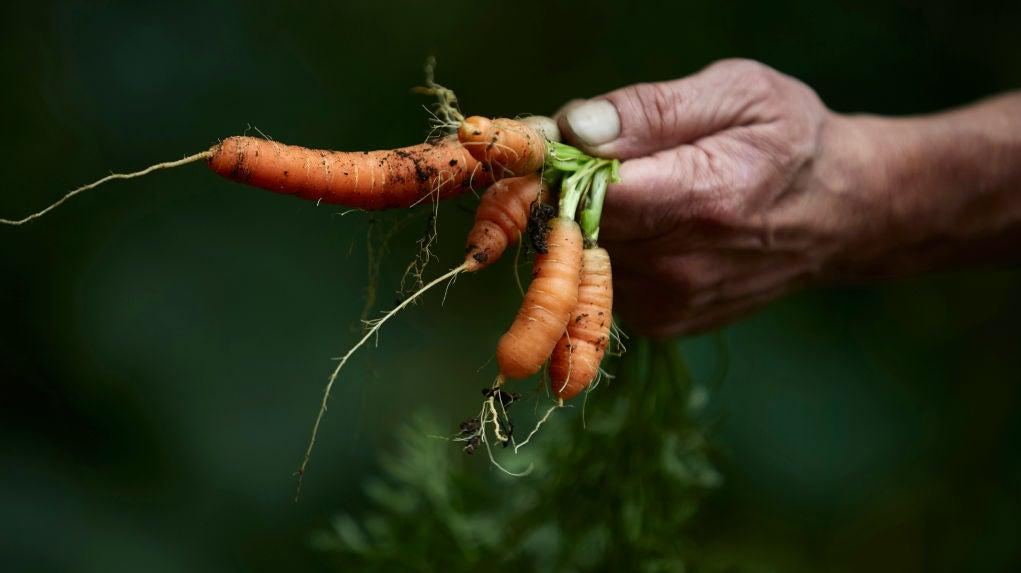Do These Things Right Now For Your Spring Vegetable Garden
It's just about time to germinate those cool-weather annuals, baby.
My porch peppers went sicko mode last year. It was my first time experimenting with apartment-friendly container gardening, and it worked—by the end of the growing season, I had jars and jars of pickled serrano peppers to give away to friends. Now, I'm counting down the days until I can begin my porch garden once more. If you also relish the idea of, ahem, homegrown relish, consider this your wake-up call: It's still frigid outside, but now is the time to prepare your porch garden. Here's what you should be doing right now to set yourself up for spring gardening success.
Order your seeds
Unless you've got seeds saved from last year's heirloom crop (more on that here), you'll need to buy your seeds. Don't wait until it's time to plant outdoors, either! While some crops can be direct seeded outdoors in early- to mid-March, it's better to start them indoors and then transplant them outdoors when you're sure the last frost has passed. This goes for everything from broccoli and cauliflower to spinach and onion starts. The earlier you acquire your seeds, the earlier you can start germinating indoors. If you're not sure where to find seeds, I'm clinically obsessed with Baker Creek Heirloom Seeds, which boasts an insanely robust seed catalog and free shipping.
Germinate seeds indoors: Warm climate edition
Once your seeds arrive, it's time to round up a bunch of plastic planters from the hardware store and get to germinating indoors ("germination" = the point at which a seed begins to develop and put out shoots). But how long do you need to germinate your seeds indoors before placing them on your porch? That depends on your climate.
For example, if you live in a long-summer climate like Florida or Georgia, you can place most seedlings outside as soon as the last frost passes in mid-March. Just get yourself a cheapo soil thermometer from your nearest garden center and make sure the soil has reached at least 35 degrees. (This doesn't apply to warm-weather plants like cucumbers or beans. You need to wait until the soil is near 60 degrees before planting those bad boys.)
Finally, if you live in a long-summer climate, be mindful of planting seeds in very warm soil. Soil temperatures of 70 and above are great for initial seed germination; however, that temperature can hinder subsequent plant growth, per Horticulture.
Germinate seeds indoors: Wintry climate edition
I do not live in a long-summer climate. I'm based in Chicago, and April temperatures can be extremely unpredictable. With that in mind, I'll start watching the weather forecast around mid-April. As soon as I'm confident the last frost has passed, I'll go ahead and set my plants outside for the season.
For example, I'm growing these very cute little tomatoes this year. According to the seed supplier, these are at their most hardy when germinated indoors for around six weeks. If I plant them this weekend, that should give them plenty of time to grow good and strong before I place them outside at the end of April. Until then, my seedlings will hang out in their cozy pots next to my kitchen radiator for added warmth.
Mind your roots
One more note: I'm not growing any root vegetables this year, but if you're experimenting with radishes, beets, carrots, or turnips, know that they don't like to be transplanted. With that in mind, wait until you're confident the frost has passed, and then plunk 'em directly outside.
I know, I know. It's a lot, and I'm definitely still learning. If you're in the Chicago area and want to start preparing your spring garden, there's a very handy planting schedule here. If you're not located in Chicago, try giving your garden center a call to gauge the best timeline for planting, germinating, and transplanting your crops. Nothing left to do but grow, baby, grow.
